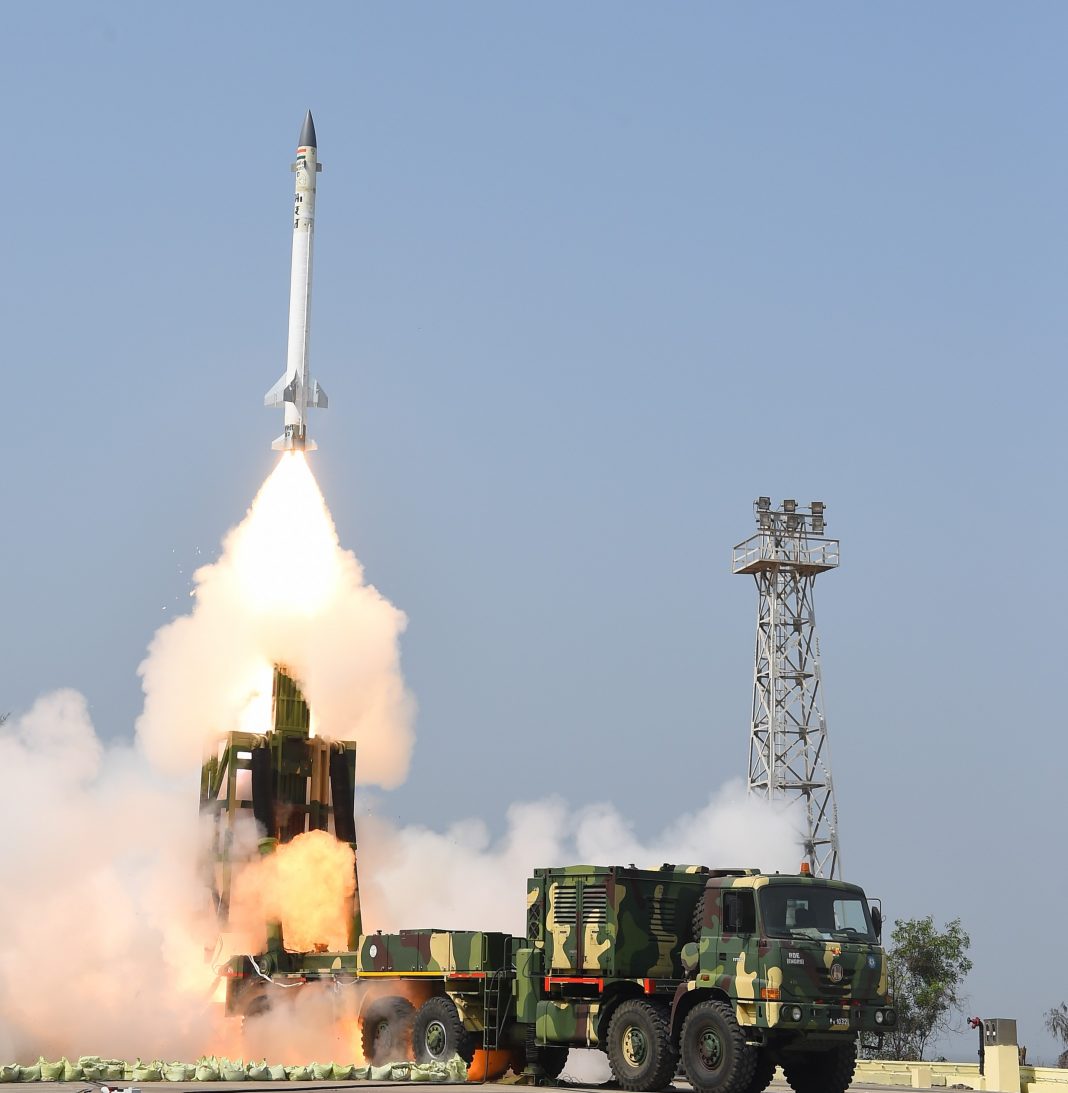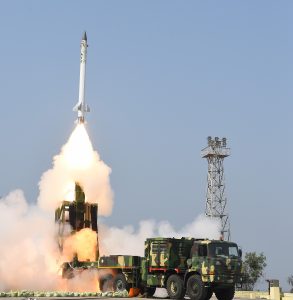After demonstrating a hit-to-kill interception with its PDV exo-atmospheric anti-ballistic missile (ABM) missile in February, the Defence Research and Development Organization (DRDO) has followed up that success by executing an intercept mission with its AAD endo-atmospheric interceptor earlier today. The AAD test vehicle achieved a terminal intercept of the target missile at an altitude of 15 km. The AAD configuration for this test was similar to what would be offered for production and deployment. DRDO believes that this test takes Phase-I of India’s Ballistic Missile Defence (BMD) very close to the finish line.
The Test
Today’s intercept mission was as an explosive intercept, with the pre-fragmented warhead on-board the AAD being made to explode using the missile’s radio proximity fuze (RPF).
AAD was initially guided by its on-board inertial navigation system (INS) which received continuous updates about the incoming target’s trajectory from ground-based radars through a secure data link. After that, a radio frequency (RF) seeker in AAD’s nose cone section tracked the target while an intercept course was plotted by its on-board computer (OBC)
The single-stage target missile (see the image below) used in this test is based on a Prithvi booster and is capable of mimicking the re-entry characteristics of a medium range ballistic missile (MRBM). In order to successfully simulate the angle of attack and re-entry velocity usually associated with a MRBM, this target missile has an apogee greater than that of a standard member of the Prithvi missile family. Incidentally, the target missile also boasts a ring-laser gyroscope (RLG) based INS.
 Image: The target missile takes off
Image: The target missile takes off
About AAD
Image: AAD takes off for today’s mission
AAD is a single-stage missile powered by solid propellants delivering high specific impulse values. The missile has a length of 7.32 metres, diameter of 420 mm and a weight of 1275 kg. Its guidance package has a fibre optic gyroscope (FOG) with 0.1 degree/hr drift at the heart of an INS which receives updates from ground based radars such as the Long Range Tracking Radar (LRTR) and the Multi-function Fire Control Radar (MFCR). Both of these radars were initially developed by DRDO’s Electronics and Radar Development Establishment (LRDE), Bengaluru with foreign collaboration. For the end-game, AAD uses a RF seeker with considerable tracking range. AAD can intercept targets at altitudes between 15 to 25 km. In the course of flight, AAD achieves high supersonic speeds and the efficacy of its thermal protection systems as well that of its actuation system has been demonstrated repeatedly.
The version of the LRTR used in today’s AAD mission is an L-band array that can track a ballistic target with a radar cross section (RCS) of 0.1 sqm from over 1500 km away. MFCR, which is a S-band array has a tracking range of over 370 km for a target with a RCS of 0.3 sqm. Both radars are capable of variable track rates.
The ground based launch control elements for AAD are the same as that for PDV.
The Mobile Launcher
Today’s test was conducted from a mobile launcher that can house a total of 6 AAD interceptors in canisterized configuration (see the video below). The launcher has been built by Tata Power SED and can also be used to launch the Prahar short range surface to surface missile which has air frame commonality with AAD. Overall, today’s AAD was tested in what is essentially going to be its deployed system configuration. (Although, only one canister was loaded onto the launcher frame for today’s test.)
As such, scientists associated with Programme AD i.e India’s BMD programme overseen by DRDO’s Research Centre Imarat seem quite upbeat about the progress of their recent efforts. A couple of more AAD trials are likely to conducted in the coming months after which the Government of India will take a final call on ordering the system for serial production.
All photos courtesy DRDO
© Delhi Defence Review. Reproducing this content in full without permission is prohibited.

































